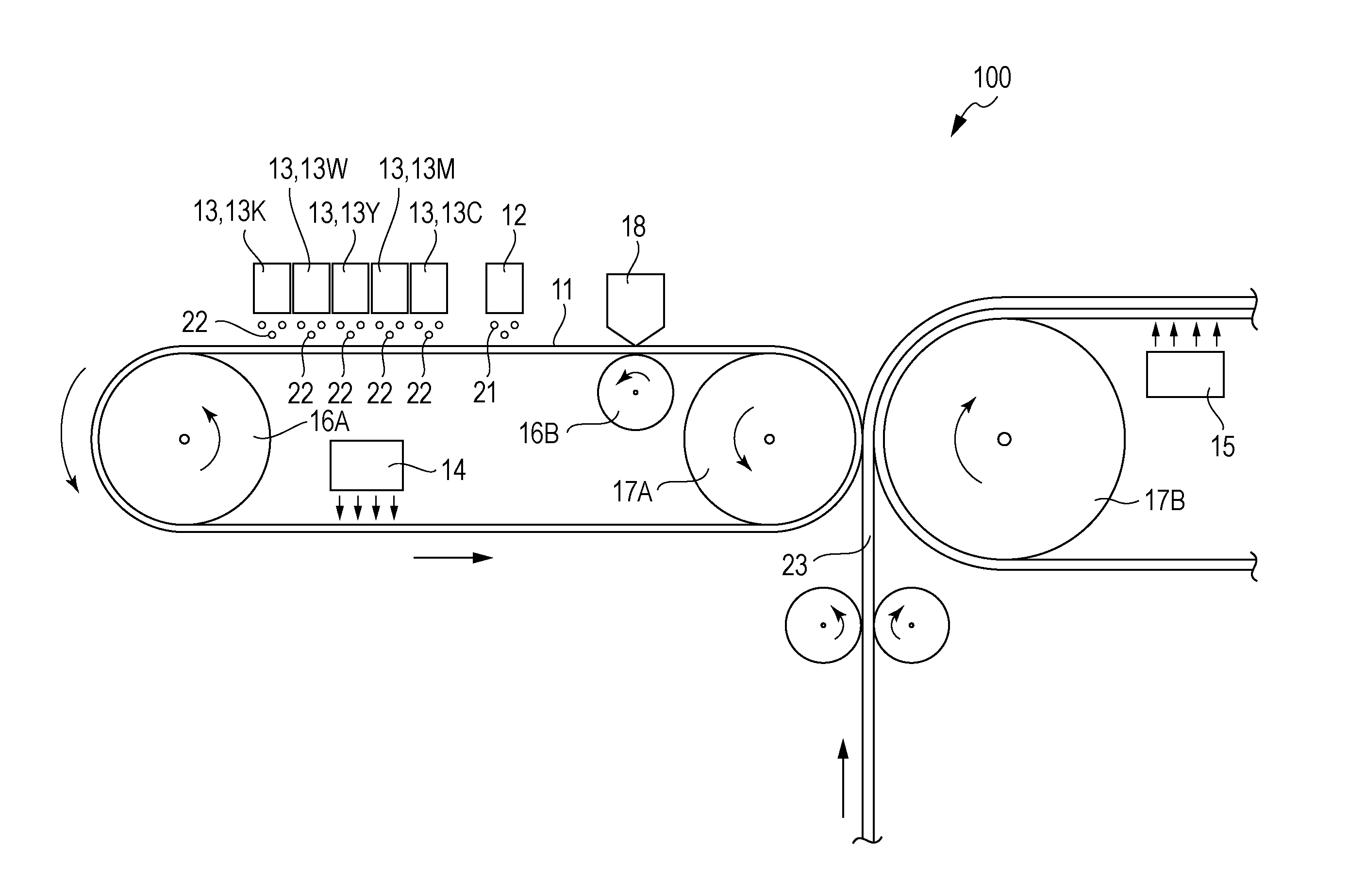Method of manufacturing recorded matter, manufacturing device of recorded matter and recorded matter
a manufacturing device and recording material technology, applied in the direction of printing, duplicating/marking methods, etc., can solve the problems of difficult to reliably form a printing portion in a desired shape, difficult to make the fixation of the printing portion to the recording medium sufficiently superior, and difficult to prevent insufficiently, so as to prevent involuntary spreading wetness and suppress the usage amount of first ink 21. , the productivity of the recorded matter may be made particularly superior
- Summary
- Abstract
- Description
- Claims
- Application Information
AI Technical Summary
Benefits of technology
Problems solved by technology
Method used
Image
Examples
examples
1. Manufacturing of Recorded Matter
[0140]The recorded matter was manufactured as described below.
embodiment 1
[0141]First, a manufacturing device as shown in FIG. 1 was prepared.
[0142]The intermediate transfer medium configuring the manufacturing device was configured of a 100 μm Teijin Tetoron Film G2 transparent PET film (manufactured by Teijin DuPont Films Japan Ltd.) In addition, in the transfer portion, the curvature of the intermediate transfer medium was larger than the curvature of the press roller as the recording medium transport unit.
First Ink Application Step
[0143]First, according to the ink jet method, ethanol (boiling point: 78° C.) as the first ink was ejected in a predetermined pattern towards the intermediate transfer medium from the first ink application unit. Such a first ink causes the surface free energy of the intermediate transfer medium to be reduced. In addition, in this step, the thickness of the layer using the first ink was 1 μm.
Second Ink Application Step
[0144]Next, according to the ink jet method, the second ink was applied selectively toward locations on the i...
embodiment 2
[0167]Other than using 2-propanol (boiling point: 82° C., surface tension: 23.7 mN / m) as the first ink, the recorded matter was manufactured in the same manner as Embodiment 1.
PUM
| Property | Measurement | Unit |
|---|---|---|
| boiling point | aaaaa | aaaaa |
| boiling point | aaaaa | aaaaa |
| boiling point | aaaaa | aaaaa |
Abstract
Description
Claims
Application Information
 Login to View More
Login to View More - R&D
- Intellectual Property
- Life Sciences
- Materials
- Tech Scout
- Unparalleled Data Quality
- Higher Quality Content
- 60% Fewer Hallucinations
Browse by: Latest US Patents, China's latest patents, Technical Efficacy Thesaurus, Application Domain, Technology Topic, Popular Technical Reports.
© 2025 PatSnap. All rights reserved.Legal|Privacy policy|Modern Slavery Act Transparency Statement|Sitemap|About US| Contact US: help@patsnap.com


